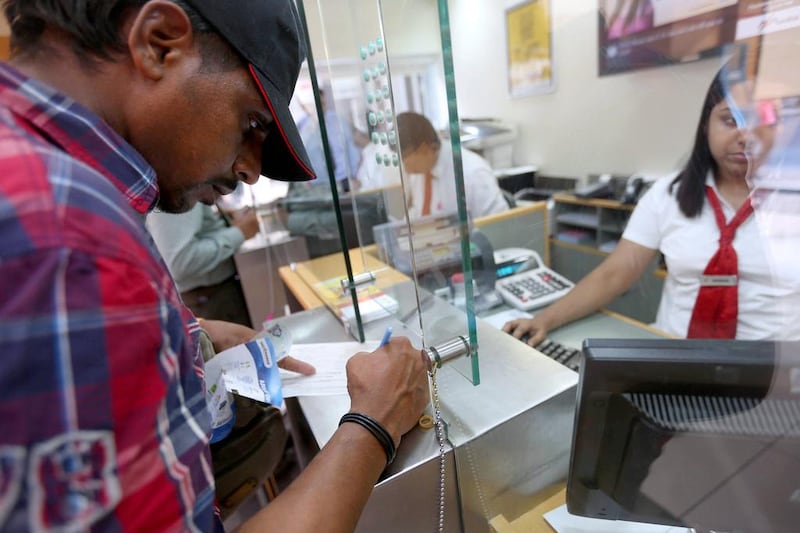MUMBAI // The GCC remained the largest source of remittances to India in the last financial year, accounting for 37 per cent of the total remitted amount, a study shows.
The bulk of the money was spent on the food, education and healthcare needs of expatriates’ families in India, although there has been a growing trend in recent years for a higher proportion of remittances to be used for investment, according to the findings of the Reserve Bank of India.
They are also being placed in relatively high-yielding term deposits at banks and used for property purchases.
Hyderabad, Mumbai, and Bangalore are among the areas where use of the funds for investment purposes is relatively high, the study shows.
In the past financial year that ended in March, remittances from the GCC to India rose to US$24.93 billion, from $24.382bn in the preceding year and $16.431bn the year before that.
The United States ranked number two behind the GCC, with remittances accounting for 34 per cent of the total.
Remittances to India by the global Indian diaspora have been rising as the country’s economy slows.
The weakness of the Indian rupee – which plumbed a series of record lows this year – bolstered the increase in remittances, as it allowed expatriates to use the US dollar or the dirham to buy more rupees.
Globally, India is the largest recipient of remittances, receiving a record $69bn last year, according to the World Bank. Remittances to India this year are expected to increase to $71bn.
Yesterday the rupee was trading above the 61 level against the US dollar, compared to levels of about 55 in January. It hit a historic low of 68.84 in August on expectations of the US Federal Reserve winding down its stimulus programme and concerns about India’s current-account deficit.
“Remittance has been a steady source of income for the Indian economy even during the spell of recession,” said Promoth Manghat, the head of global operations at UAE Exchange, the money transfer and foreign exchange firm.
Mr Manghat said his firm had recently noted an increase in remittances for investment in property, mutual funds and term deposits.
“The weaker rupee could be a reason here, as it leaves the expatriate with more rupees in hand, which prompts him to look towards investing for a better future,” he said.
According to the Indian central bank, the way that Indian expatriates send money home is also gradually changing.
“While electronic wire [transfer] … continues to be the dominant mode of transferring remittances by the overseas Indians, in the recent period, there has been a significant increase in the share of remittances transmitted through direct transfer to bank accounts and through [the] online mode,” it said.
High-value remittances, defined in the report as 50,000 rupees (Dh3,010) and above, accounted for 63 per cent of the total value of remittance inflows into India, it said.
business@thenational.ae





